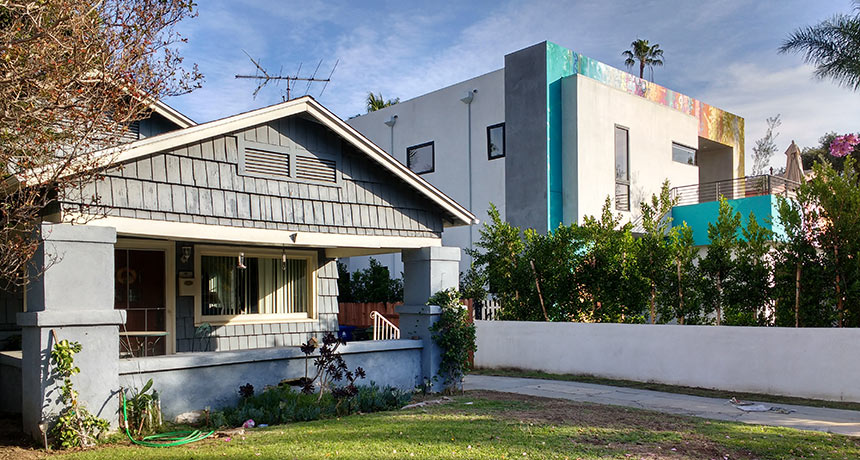Immigrants pave the way for the gentrification of black neighborhoods
A study shows Asian and Hispanic immigrants alter U.S. neighborhood demographics

IMMIGRANT PIONEERS For decades, gentrification left predominantly black neighborhoods untouched. But now these neighborhoods are gentrifying faster than nonblack ones. Immigrants may be pioneering that shift, a study finds.
Alex Millauer/Shutterstock
Many think of gentrification today as wealthy, white millennials moving into low-income, minority neighborhoods and driving up housing costs. Yet a new study suggests that another group may play a key role in the process: immigrants.
Gentrification, in which affluent outsiders settle and renovate rundown neighborhoods, generally decreases in white neighborhoods when immigrants from Asia and Latin America move in. The opposite is true in black neighborhoods, where rising immigrant numbers increase the odds an area will be gentrified.
“Changing the ethnoracial composition might make neighborhoods seem more amenable for [white] people to move in,” suggests study coauthor and sociologist Jackelyn Hwang of Stanford University, who presented her findings April 11 at the annual meeting of the Population Association of America in Austin, Texas.
Wealthy and middle-class whites fled the nation’s cities for racially homogenous suburbs in the 1950s and ’60s. Then over the next few decades, they slowly returned to cities to be closer to jobs and other amenities. That return triggered the gentrification of urban communities, initially in predominately white and other nonblack neighborhoods. By the 1990s, though, whites were also moving to predominately black neighborhoods.
In 2015, Hwang showed that, even in the 1970s and ’80s, black neighborhoods were more likely to be gentrified following the arrival of Asian and Hispanic immigrants. With the number of U.S. immigrants growing from 9.7 million in 1970 to 42.4 million in 2014, Hwang suspected her earlier observations might still hold true.
In a new analysis involving 151 U.S. cities with populations over 100,000, Hwang used census data from 1990, 2000 and 2010, as well as estimates from the 2010–2014 American Community Surveys tracking demographic trends (referred to in the study collectively as 2012 data). Within those cities, Hwang isolated census tracts, which serve as proxies for neighborhoods of about 4,000 people, that had a median household income below the city’s 1990 median household income. These tracts could be gentrified, she theorized.
She then estimated how many actually had been gentrified by counting tracts where either median household incomes or the share of college-educated residents had risen faster between 1990 and 2012 than those measures for the overall city. She found that about half of the eligible tracts had gentrified during that period.
Next, Hwang broke those gentrifying tracts down by race. She found that, in the 1990s, an influx of immigrants decreased the odds of gentrification in nonblack neighborhoods, but slightly increased those odds in predominately black neighborhoods. From 2000 to 2012, a 1 percent increase in immigrants to a black neighborhood increased the likelihood of gentrification by 9 percent. Conversely, the presence of immigrants in white and other nonblack neighborhoods decreased the likelihood of gentrification by 4 to 5 percent.
The research underlines that “gentrification is a much more complicated phenomenon than a white hipster moving into a black neighborhood,” says Mahesh Somashekhar, a sociologist at the University of Illinois at Chicago not involved with the study.
However, sociologist Derek Hyra suggests immigration trends may not be a main driver of gentrification. Instead, he wonders if all people, including blacks, whites and recent immigrants from Asia and Latin America, are simply following new jobs that happen to be located near historically black neighborhoods.
Researchers must recognize that gentrification is a more complicated, nuanced phenomenon than has been recognized in the past, says Hyra, from American University in Washington, D.C. “There’s something beyond the white-black paradigm to understanding the gentrification wave of the 2000s.”
Editor’s note: This story was updated April 23, 2019, to cite both authors on the paper presented at the Population Association of America meeting.







